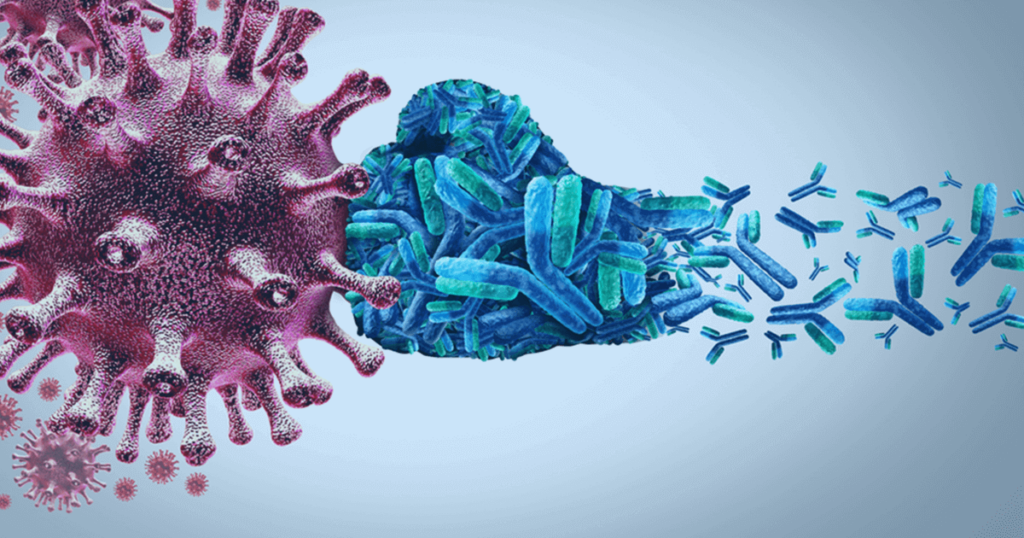Nanobodies are engineered small proteins that recognize and specifically bind to an antigen to initiate an appropriate signal- like antibodies. However, nanobodies bind to antigens with greater specificity and display other advantages over conventional antibodies. Extracted from camelids, these antibodies were found to comprise only of heavy chains, while demonstrating the same functions as conventional antibodies. After further isolation, scientists developed smaller fragments that could successfully identify and bind to antigens. If their function is the same as conventional antibodies, how else are they advantageous? And what is the scope of their application?
Characteristics of Nano bodies Smaller size:
The lack of light chain results in a smaller size; a conventional antibody is around 160 kDa while a nanobody is around 15 kDa.
This, in addition to being hydrophilic, allows nanobodies to enter and interact with cells that are much deeper and difficult to access, allowing enhanced screening techniques in identifying and diagnosing cancers or tumors in earlier stages and more effective, targeted cancer immunotherapy options as they penetrate tumor tissues and bind with high specificity.
Navigating EU Classification Standards for AI in Medical Devices and Diagnostics
Excess unbound agent is rapidly removed due to fast renal clearance. However, this could be disadvantageous as it may not allow the nanobody sufficient time to successfully bind to their target tumor.
Increased stability: The simple structure of nanobodies enable them to withstand extreme conditions such as longer shelf life, harsh temperatures and pH and chemical denaturants which do not affect antigen-binding capacity. This means they can be stored and transported to wider geographical distributions. Smaller size and increased stability can also allow nanobodies to be genetically engineered and allow easier up-scaled production- an ideal attribute for R&D.
High Specificity: the heavy chain of a nanobody contains a region that possesses absolute binding potential and strong affinity towards target antigens. Additionally, nanobodies and conventional antibodies will not compete for the same binding site which is important when quantifying antigens or other target proteins. High antigen specification is crucial in order to prevent side effects and false positives.
Nanobodies could provide a more targeted therapy against SARS-CoV-2
Despite there being vaccines that have assisted in the prevention of Covid, or minimization of its impact, there is still a lack of effective medication to treat the infection. Antibody therapies such as interferon and other antivirals are used for treating the virus.
A vaccine triggers a human’s immune system to produce necessary antibodies to fight an infection. Monoclonal antibodies enhance the immune system after already being affected. However, there is a need for more accurate screening and detection of viruses so that target therapy can be implemented.
The use of nanotechnology shows many advantages.
One in particular is the use of nanobodies for treatment of the virus. With their desirable characteristics, the exploitation of nanobodies could pave a more efficient approach in the fight against Covid19.
The virus expresses spike proteins on its cell surface membrane. Healthy host cells express angiotensin-converting enzyme 2 (ACE2) on their cell surface membrane.
Exploring the Evolving Regulatory Landscape for Gene Therapy Trials in the EU
The spike proteins on the virus bind with the ACE2 to cause a conformational change that ultimately fuses the peptide into the host-cell membrane and facilitates the entry of the coronavirus into the host cell. Nanobodies work by binding to subunits on the SARS-CoV and inducing an irreversible conformation change that cannot bind to ACE2.
A recent study found a nanobody, N1.2, to prevent the entry of pseudovirus containing SARS-CoV-2 spike to interact with the angiotensin-converting enzyme 2 receptor in the host cell- the primary mechanism by which the SARS-CoV-2 makes its entry.
N1.2 was found to be effective against spike proteins from the original variant and the Omicron variant. Thus, it is presumed that N1.2 will provide an effective therapeutic pathway for variants that gain entry into host cells via interaction with angiotensin-converting enzyme 2 receptor.
This study reveals an important foundation for research into therapies against the coronavirus and its variants, that may be utilized for other disease targets. Another study highlighted that the small size and the heavy-chain’s binding ability allows for specific binding to the receptor-binding site of the spike protein.
Interestingly, nanobodies can be nebulized and be delivered by an inhaler directly to the lungs of a Covid19 patient, allowing a more desirable alternative to IV administered antibodies or vaccines.
Furthermore, the same study investigating fusing nanobodies for more specific target of regions in the virus’ spike proteins. These engineered nanobodies were also found to be similar in structure to the FDA-approved antibody blinatumomab.
The results of this investigation demonstrated that fused nanobodies could be better alternatives for the treatment of Covid19. Nanobodies have a robust production efficiency due to their simple structure and low complexity making them a strong tool for combatting the pandemic disease that has affected the entire globe.
Such nanotechnology can be exploited across many diseases to develop better, more effective alternatives to current available treatment.
Nanobodies – a smaller and better version of antibodies? (sciencenordic.com)

